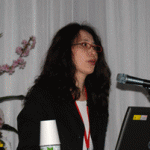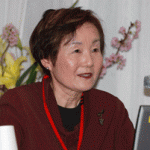Sustainability under Rapid Demographic Change
Workshop and plenary at the AGS Annual Meeting 2010
18 March 2010, The University of Tokyo, Japan
How can societies progress towards sustainability under rapid demographic change? This was a key issue at the AGS Annual Meeting 2010. The demographic structure of most developed countries is changing dramatically as a result of people living longer but having fewer children. At the same time, these societies must make drastic changes in the use of energy and natural resources to move towards environmental sustainability.
How do we design low carbon, sustainable cities for an ageing society? Will ageing societies have the capital to invest and the innovation necessary to achieve this with a declining population and a shrinking workforce? How can modern technologies be used to improve the quality of life of elderly people and allow them to continue as productive members of the workforce? How can pensions and health care be sustainably financed in an ageing society?
The talks and workshop at the AGS Annual Meeting 2010 have launched a discussion on how to relate the technological strengths of the AGS universities, and advances in research for sustainable urban futures, with gerontological and social research, to generate new insights and solutions.
Junichiro Okata of the UT Institute of Gerontology emphasised social sustainability at the centre of urban planning: there seems to be a consensus around a compact sustainable city model, characterized by high density but human-scale mixed-use streets and buildings (with homes designed to be flexible and affordable for different types of household), pedestrian-friendly streets and public spaces that encourage social interaction, and easy access to social services and infrastructure.

Prof. Sawako Shirahase of The University of Tokyo gave the keynote "Looking for a Sustainable Society: family change in a rapidly ageing population"
Ageing in place refers to a community environment where people can live with dignity throughout life. In Sweden today 95% of people over the age of 65 live at home, and in Japan in 2050 more than 40% of single households will be people over the age of 65. Inga Malmqvist from Chalmers explained how these communities need new designs for housing, mobility, services to the home, social participation, assistive information and robot technology, and health care services. For example, flats can be designed so that they can easily be reused in different ways, or converted from one four-room flat for a couple into two room flats for single residents.
New technologies could be very beneficial for meeting the needs of an ageing society. For example, robots could expand personal mobility in the neighbourhood and within the home, and provide assistance with household tasks, explained by Isao Shimoyama of the UT Information and Robot Technology Initiative and Masashi Koga of Hitachi Ltd. It is important that research investigates what motivates senior citizens of different ages to use new technologies, or what barriers prevent them from benefitting. Juliana Sutanto of ETH illustrated how aging is a creative process of continuous adaptation to declining physiological conditions, in which tasks are accomplished successfully in adapted ways, taking cues from the surroundings.
More information AM2010 website





